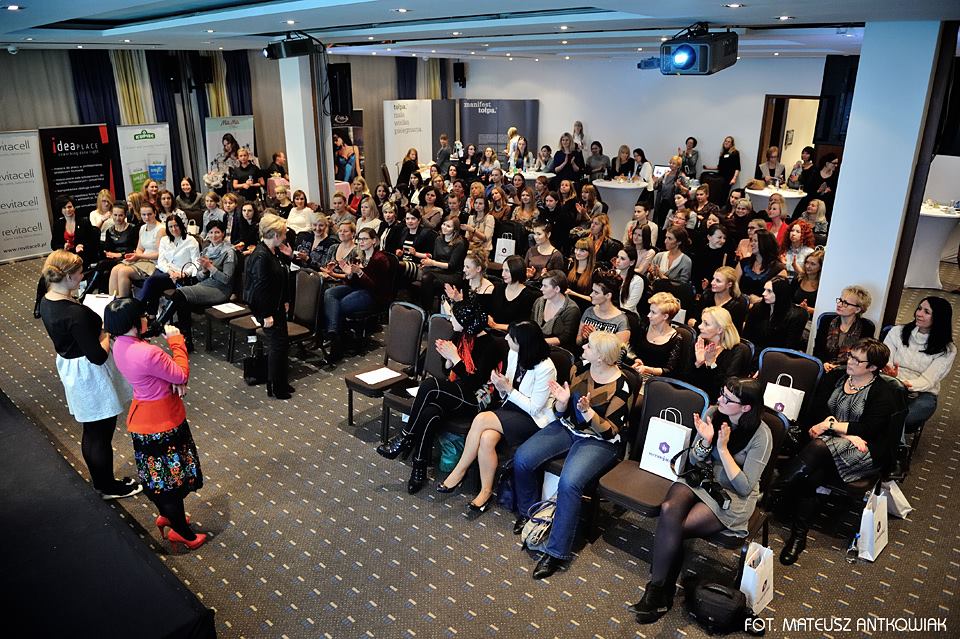Building a community around the brand is one of the most important tasks a company has to face today. Customers are becoming more demanding, less involved, and thus very often, „temporary”.
You don’t have to convince anyone that it’s better to keep a current client than to look for a new one. Creating a community around the brand, however, is neither a simple nor a quick solution. I have already written about how to build it here and here.
The worst time related to the pandemic is behind us, but the vast majority of us still work online. The days when almost all of us worked in offices are gone. According to the research company Gallup, in 2022 as many as 53% of employees will perform hybrid work. This will certainly translate into consumer behavior, whose commitment to brands will be visible primarily on the Internet. The vision of a committed group of people who follow our activity, comment on it, and willingly participate in our projects is tempting, and certainly, many of us dream about it. Below, I present some factors that determine the establishment of such communities and give you some tips that will help you create their foundations. I believe that they will prove helpful despite general fatigue and jadedness with online work.
Let’s start with the most important question: what do you do to start building a community around your brand?
Where to Start Building a Community
1. Define a common goal and values that you want to follow, and that will attract other people.
Are you a fan of healthy food? Perfect!
Show your community that this is an important topic for you. By sharing your knowledge, show what your healthy approach to nutrition is—describe what you eat every day and what tricks and techniques you have to improve things. Show your actions behind the curtain.
Is your company engaged in creating online stores, and do you want to go to a higher level of service and standards in e-commerce? Show examples of your work regularly, ask about the experiences of others, and share your thoughts.
A few years ago, we organized events under the name of Wenusjanki (Venusians). Cyclical meetings were held in Krakow, Warsaw, Wroclaw, Tri-City, Kielce, and Poznan. Their main goal was to present interesting people who worked in three areas: business, fashion, health, and beauty. Meetings were organized exclusively for women, and each time attracted crowds of women who wanted to learn about interesting issues related to these areas. Over 2,500 women attended our events every year!
2. Find a place for your community.
It can be, for example, Instagram, LinkedIn, or YouTube. This should be the space you like, feel comfortable in, and where you can meet many people who represent your views and values. Your task will be to gather interested people and provide them with appropriate content regularly.
However, I advise against persuading others to switch their platform. Even when you know that a person prefers Instagram to Twitter, don’t focus on it. You will needlessly devote time and energy to this, and the effect cannot be assured. Instead of reinventing the wheel, it’s better to paint it in patterns that you like.
3. Take on common challenges.
Every community has its challenges! If you are interested in sports, you may often have a decrease in motivation, or, on the contrary, you are looking for people with whom you will also be able to train. Or maybe you want to ask about diet or health issues because when you do specific exercises, you feel pressure in the body and want to know if others have similar ailments. Or do you just want to be sure that you are doing the exercise correctly?
Talking openly about passions or the pros and cons of advertising methods, using selected platforms, and showing how to deal with them are plenty of reasons to create a community.
And here we come to a very, very important aspect of building it. No community is created just to celebrate something together. People have been gathering for generations to grow and support themselves. When planning the development of your community, ask yourself what kind of problems arise from a given job, technology, or service. Looking at what people you care about are struggling with shows how you handle similar challenges. And so, we move on to the next point about community building.
4. Create an opportunity to get to know each other and identify each other.
The more we allow others to get to know each other, to talk about common values and experiences, the greater and more integrated our community will become. We do not know when events will return on the same scale we know from before the pandemic. Relations between the participants of such meetings were replaced indefinitely by contacts on social networks. The space under the posts, or during the open webinars, became a place as important as the pre-pandemic conference room.
In addition, it is ideal when people can name themselves and define themselves as members of a group. That is why this last point is equally important here.
5. Use names to identify yourself as a member of the community.
After some time, the participants of the Wenusjanki meetings began to call themselves that. We’re Venusians, they said! It was assumed that a Venusian is an active woman, eager to learn new things and meet new people. We are currently creating the Strong Women in IT community, i.e., women who create Polish and global technologies.
But it is enough to look at other people to notice that this mechanism really works well; Michał Szafrański has Financial Ninja, Ewa Chodakowska has members of Chodagang, and Pani Swojego Czasu has women interested in managing their time more efficiently.
The same thing is true in many other aspects of our lives: I am a runner, a karate fighter, a singer, a politician, an entrepreneur. Naming yourself is an important aspect of your sense of identity. I encourage you to take advantage of this need also at home.

Online Challenges as a Way to Engage the Community!
Now that we have summarized what is needed to build a community around your brand, let’s focus on one issue that has recently been particularly visible on the Internet: challenges.
I honestly admit that I am delighted with how some people have gotten to the master level of this kind of community activation.
An example is #fighterchallenge by Anna Lewandowska. The challenge encouraged active training. During the challenge, meetings with experts were held, and nutritional and healthy lifestyle advice was presented. For me, it is a win because…
- it promotes the Sportswoman app,
- it shows the people who work with her, so it is not only a challenge, but it also shows appreciation to others,
- it promotes the catering service she offers.
There are certainly even more business benefits. What is particularly worth paying attention to is the name—anyone who faces their weaknesses wants to see a fighter, a person who does not give up easily and fights to the end. When we face a challenge that means changing our habits and lifestyle, and putting in the physical effort; the name can strengthen our perseverance to the end.
This should be accompanied by showing the efforts of others and their transformation. It’s very motivating to see the woman who joined the challenge lose three or four kilos in the process. “If she could, then so can I.” (This is an interesting way to present Point 4 of the principles of community building—we show other ordinary people who are with us in this challenge; we are not alone.)
A similar mechanism is also used by Ewa Chodakowska in her #body&mind.

What Speaks in Favor of Creating Such Challenges? Why Is It Worth It?
1. They make us better.
It can be a monthly course in writing SEO-friendly texts, setting up Facebook ads, or creating communication in webinars. You can select any challenge and translate it into an interesting one for your target group activity. There is only one condition: they should help us acquire a new skill or improve our current skills.
2. It develops a sense of identification with the brand.
If someone teaches us something, we start to trust them more and believe in the effectiveness of the services they offer.
3. Challenges are defined in time.
That is why you will be able to verify their impact on your business relatively quickly. Has the number of orders, inquiries, or recommendations increased?
If you want to develop the community around your brand, write to me. We can plan activities tailored to your needs.

Fot. Unsplash oraz archiwum prywatne agencji Come Creations Group
Why do we focus on balance? How mental health is gaining value
In the "Health Tech of The Week" initiative, I discuss health comprehensively, emphasizing the importance of a holistic approach to individuals....
Cognitive Behavioral Therapy from Home Instead of the Office
They’ve moved therapists and patients in front of a computer screen, increasing access to therapy and mental health support—without losing its...
Technology Guarding the Lives of Newborns: Polish Startup Wins the Mother and Child Startup Challenge 2024
On November 27, 2024, Warsaw's Capitol Theatre hosted the grand finale of the third edition of the Mother and Child Startup Challenge—one of the...




